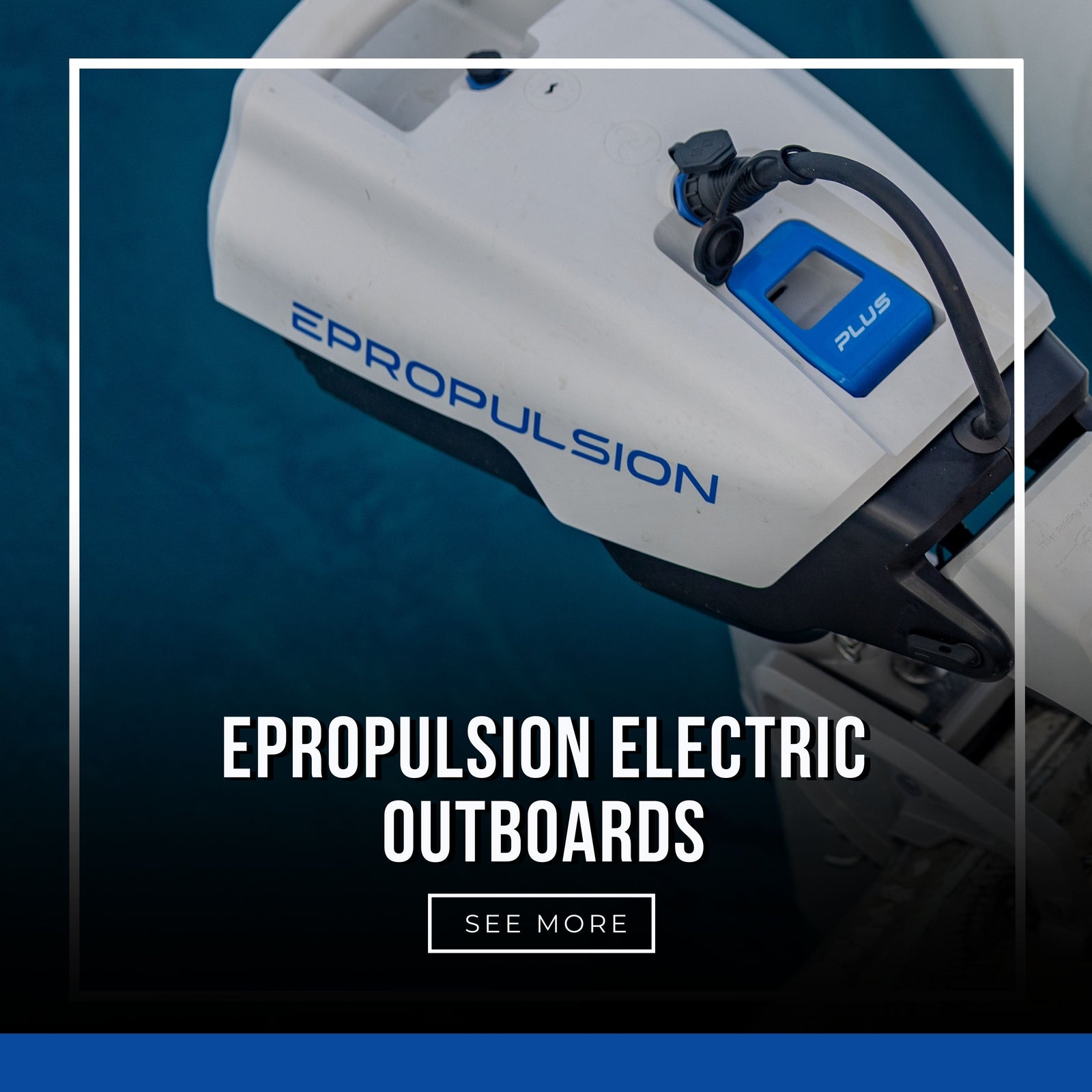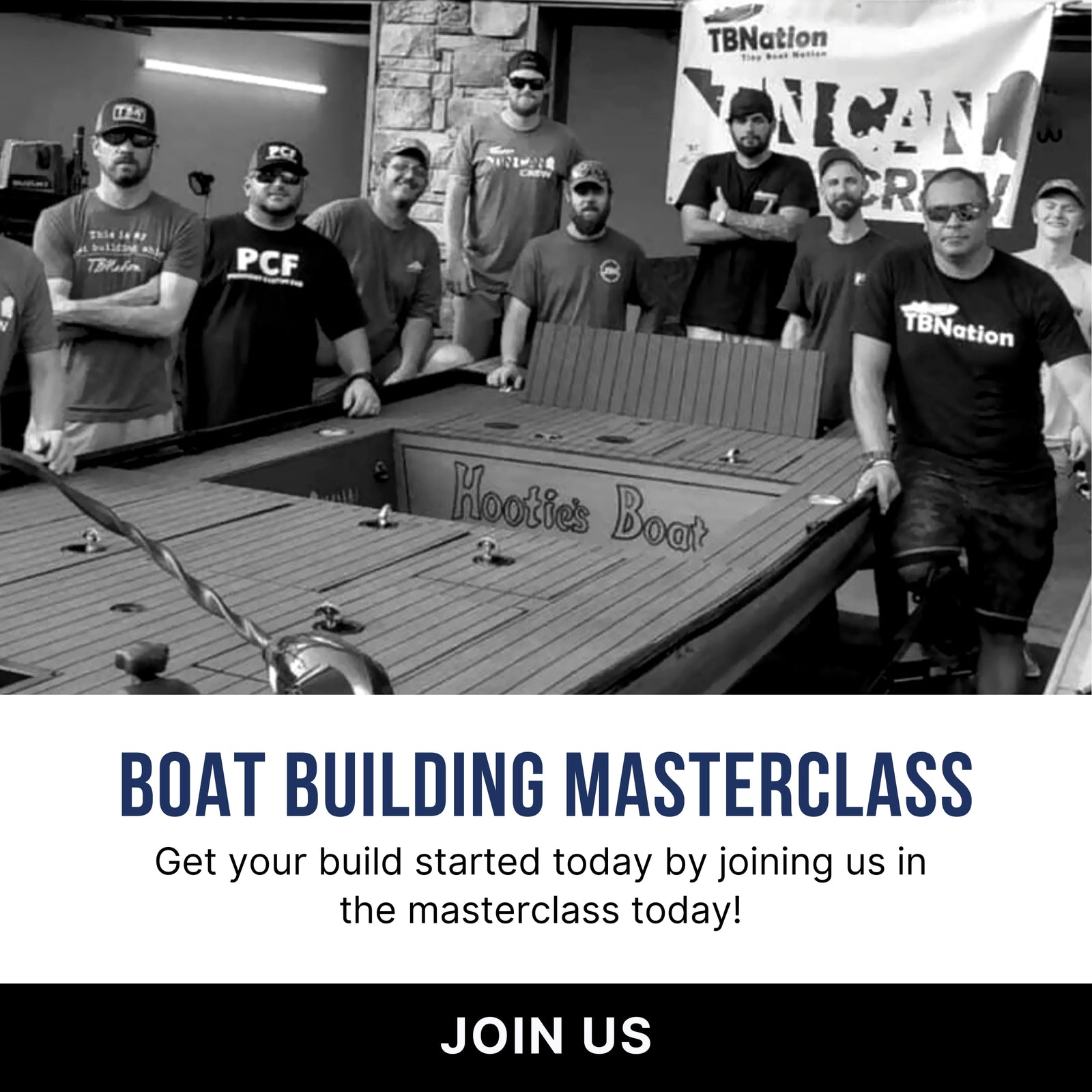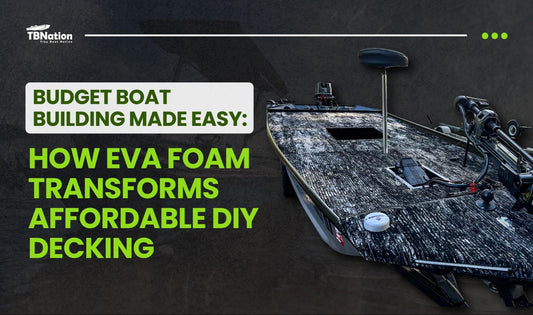Your Cart is Empty

The Evolution of Wooden Jon Boat Conversions: A Journey with Tiny Boat Nation
Tiny Boat Nation serves as a source of inspiration for the DIY boat-building community. It shows how the journey started with simple wooden Jon boats and grew into using modern aluminum designs. This change shows how the community is open to new ideas and willing to improve traditional boat-building methods by using better materials and techniques for stronger and longer-lasting boats.
Switching from wood to aluminum is not just about better technology. It also shows how dedicated DIY builders are to learning, trying new things, and sharing what they know. Tiny Boat Nation’s story is a strong reminder that passion and hard work can lead to great progress, inspiring others to start their own boat projects and see what they can create.
The Genesis of Wooden Boat Conversions
Overcoming Initial Challenges
Many do-it-yourself boat builders begin with wood since it is more readily available and easier to deal with than metal. A wooden deck is an excellent place to start since it offers an enjoyable and practical way to learn the fundamentals of boat building. Builders may progressively acquire experience as their skills improve.
A lot of boat builders are inspired to explore more complex materials, like metalworking, as their confidence and knowledge grow. This natural progression embodies the essence of the do-it-yourself mentality: acquiring new skills gradually, experimenting, and constantly striving for improvement. Building boats is a voyage of self-discovery and practical innovation.
The Role of Wooden Decks
Wooden decks are vital for DIY boat builders to test ideas, make mistakes, and learn from them. This level of wood experimentation enabled enthusiasts to grasp the foundations of boat design and conversion, giving them a real method to see their ideas come to fruition. Working with wooden decks provides vital hands-on experience, instilling a sense of accomplishment and confidence in the ability to undertake more complex jobs.
This phase is important for more than just individual improvement; it also benefits the larger boatbuilding community. Sharing experiences, achievements, and failures with wooden deck projects has helped to foster a supportive and collaborative community. This collaborative learning method has helped to advance the craft, encourage creativity, and raise the general skill level among the community. Throughout this shared journey, wooden decks have evolved into more than simply a starting point; they have served as the foundation for the art and science of boat conversion.

Transitioning to Aluminum: The Gen X System
The Introduction of Gen X
The Gen X system was launched as a major advance as the do-it-yourself boatbuilding community developed and improved. Because it eliminated the need for welding, which many enthusiasts had previously found impracticable, this method completely changed the way aluminum decks and frames were constructed.
The Gen X system makes boat manufacturing easier and more accessible to persons who do not have welding expertise or equipment. It enabled builders to produce stronger and more complex designs, expanding the possibilities for DIY boat adaptations.
For the do-it-yourself community, this system represents a significant advancement. It demonstrates the motivation to develop more effective methods and involve more people in the process. The Gen X system promotes innovation and makes boat building more accessible to all by providing a welding-free option.
All things considered, the Gen X method has bolstered learning, encouraged innovation, and enhanced the sense of camaraderie among boat builders.
Aluminum Over Wood
The boat-building industry has evolved significantly as a result of the shift from traditional wooden structures to advanced materials, particularly aluminum. Aluminum's improved durability and low weight are two of its most prominent advantages, enabling builders to create vessels that are not only durable but also simpler to operate and transport.
This change represents a significant advancement in boatbuilding, offering professionals and hobbyists alike more freedom to create vessels that match their own preferences and particular needs.
The use of aluminum in the construction of custom bass boats has also improved the possibility for accuracy and customization. Aluminum offers greater detail and adaptable design alternatives than wood, allowing designers to achieve greater levels of personalization.
As a result, individuals can now customize every aspect of their Bass boats, from size and design to performance features, more easily. This technical innovation has made the ideal of owning a fully personalized bass boat more attainable, ushering in a new and exciting era of marine handicraft.
The Significance of Wooden Boats in the DIY Community
Fostering Creativity and Skills
Wooden boat projects have long been seen as a great place for aspiring boat builders to begin. They offer a flexible and easy-to-use platform where individuals can express their creativity and learn essential real-world skills. Builders get knowledge of industrial techniques including cutting, shape, assembling, and finishing through their work with wood.
This exercise encourages artistic expression while also improving technical proficiency. Wood is an excellent tool for teaching design and building concepts since it allows for experimentation and customisation, unlike more rigid materials. As a result, the initial step toward complicated and sophisticated structures is frequently a wooden boat project.
These events inspired the community of do-it-yourself boat builders while also promoting skill development. They offer community experiences that promote learning, interaction, and cooperation. The challenges and triumphs of building wooden boats foster a friendly environment in which builders may share ideas and help each other progress.
Builders take the skills and sense of camaraderie they learned from their early experiences with them when they embark on larger projects. The evolution of boat construction as a technical endeavor and a creative art form is demonstrated by this development, which starts with basic wooden boats and ends with intricate designs.

The Legacy of Wooden Boats
The shift by the do-it-yourself community from wooden to aluminum boats is a prime example of the ongoing pursuit of innovation and advancement. This action represents more than simply a physical shift; it exemplifies the DIY philosophy, which views boundaries as opportunities for innovation and development rather than obstacles.
Boat builders need to know the basic skills developed by the rich history and creativity of wooden boats. The choice of aluminum, however, was the consequence of the search for more resilient and versatile materials due to the inherent limitations of wood, namely its vulnerability to decay and the significant maintenance needed.
A new era of boat building is ushered in by aluminum boats, which are more durable, lighter, and require less maintenance than their wooden counterparts. DIY enthusiasts have shown technical proficiency and a will to experiment by switching to aluminum.
Utilizing modern materials like aluminum and overcoming the challenges of building a boat out of wood demonstrates the inventiveness of the do-it-yourself community. As a result of this development, boat builders have developed new skills that have opened up a whole new realm of possibilities for designing and building unique boats.
Recognizing the Limitations and Celebrating the Journey
Understanding Constraints
The recognition of the limitations of wooden vessels was a watershed moment in the history of boatbuilding. Although wooden boats are valued for their classic design and craftsmanship, they pose weight, lifespan, and maintenance issues.
These challenges prompted builders to look at alternative materials that would provide improved functionality and a longer lifespan without compromising construction quality. The do-it-yourself community viewed these limitations as opportunities for creativity and advancement rather than as barriers.
Many of the common issues with wooden boats were resolved with the shift to aluminum. Aluminum requires less regular maintenance and repairs because it is lightweight, extremely durable, and impervious to environmental harm. Aluminum boats are also easier to manage and carry due to their lighter weight. This change is indicative of a broader movement in the do-it-yourself community to embrace new materials and technology that improve the building process and the finished result.
The community has opened up new possibilities for modern boat design by tackling the challenges associated with building wooden boats. This development guarantees that boat building will keep expanding and changing to satisfy the demands of modern builders and enthusiasts.
The Importance of Evolution
This narrative underscores the significance of growth and evolution in DIY projects, emphasizing the importance of constant learning, progress, and the drive for improvement. It serves as a source of inspiration for future builders, encouraging them to embrace self-improvement and innovation in their craft.
It demonstrates that any progress, no matter how small, can be beneficial in developing individual abilities and strengthening the entire DIY community. It acknowledges both the accomplishments and obstacles that builders deal with, realizing that every step forward contributes to mastering their craft.
Furthermore, the success of DIY projects is determined by more than simply the technical skills taught or the projects accomplished. It is also determined by the mindset that individuals develop. It instills confidence in the potential to push past traditional boundaries and explore uncharted space with innovation and persistence.
This story motivates future builders to perceive limitations as opportunities to innovate and prosper. It encourages an inquisitive mindset and resilience, both of which are important qualities for anybody looking to establish a name for themselves in the DIY industry. This story depicts the process of learning and advancement as a source of encouragement, inspiring individuals to aim higher and dream bigger in their endeavors.
Conclusion
The progression of Tiny Boat Nation from basic wooden Jon boat projects to complex aluminum construction embodies the essence of the do-it-yourself community, which is constantly seeking expansion, creativity, and significant advancement. This shift represents a deeper process of learning, experimenting, and pushing the boundaries of conventional thinking rather than only a change in the materials used.
It gives aspiring builders great inspiration to take risks on their own projects, whether it is building a custom bass boat or engaging in another creative endeavor.
More than just a technological advancement, the switch from wood to aluminum illustrates what can be accomplished with dedication to one's craft. It demonstrates that remarkable results are achievable with creativity, dedication, and exploration.
The voyage of Tiny Boat Nation embodies the principles of do-it-yourself (DIY), the conviction that anyone can realize their goal if they have the necessary drive and determination. It acts as a reminder that the foundation of innovation is the readiness to develop, adapt, and consider new possibilities.
Frequently Asked Questions
What’s this about?
Tiny Boat Nation started with wood boats, then moved to aluminum to make boats stronger and lighter.
Why start with wood?
Wood is cheap and easy, great if you’re just getting started.
Why switch to aluminum?
Aluminum doesn’t rot, weighs less, and lasts longer. Less fixing, more fun on the water.
What’s the Gen-X system?
It’s a way to build aluminum boats without welding. You just bolt parts together. Easy!
Will my boat steering console last longer with aluminum?
Yes, aluminum keeps your boat steering console from warping and breaking down.
Join Our VIP List
Join the Tiny Boat Nation VIP Members List.
It's Free! Stay Up To Date With Announcements, Product Give Aways, News and Promotions.










